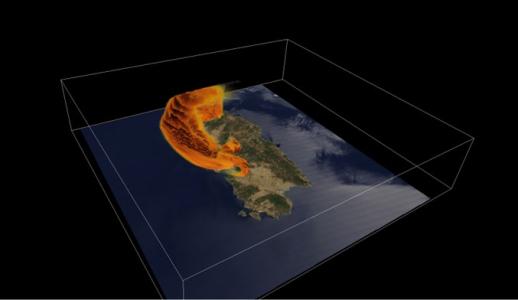MUltisource data package tools and SErvices (MUSE)
Programme
GSTP
Programme Reference
GT11-404EO
Prime Contractor
SISTEMA GMBH
Start Date
End Date
Status
Closed
Country
Austria

Objectives
The objective of this activity is to develop and integrate a data-agnostic fusion tool to simultaneously manage products coming from different geospatial data sources (satellite sensors, models, non-remotely sensed data). To demonstrate the maturity and the flexibility of the tool, a set of thematic services shall be implemented in strict connection with expert end users.
Description
The scenario of satellite-based products is wide and heterogeneous: it includes a large variety of Earth sciences data collected by heritage missions, Earth Explorer and operational missions, as well as future missions. At the same time the scenario of potential users is evolving: multi-disciplinary systems (e.g. Earth?s Digital Twins - DTE), studies and applications are becoming common and require tools to effectively extract and serve the right datasets (from satellites, simulations, ground-collected measurements), in the most suitable format to be exploited.
Preliminary activities have shown promising results for atmospheric sciences applications; moreover, the ESA Payload Data Ground Segment architecture is evolving toward standard and interoperable micro-services for data discovery, access, processing and display to satisfy end users? needs. ;
To achieve the activity objectives the following tasks will be done:
;
- To design and develop a data-agnostic fusion tool (DAFT) infrastructure, based on micro-services paradigm, to be able to manage a large variety of geospatial products e.g. satellite data from ESA Heritage Mission, Third Party Mission, Earth Explorer and future missions, model data from e.g. the Copernicus Atmosphere and climate change services.
- To propose the integration of the DAFT infrastructure within the ESA PDGS architecture. Focus shall be put on efficiency, management of high-throughput pipelines (for real time data sources), standardization of interfaces and federated deployment and operation. The integration shall be demonstrated through the implementation of full-pipeline scenarios (data discovery, access, DAFT application, exploitation) using distributed resources.
- To set up, implement and demonstrate a set of thematic services in strict connection with end users. The services shall cover at least three different domains, selected in agreement with relevant stakeholders, and feature a high level of automation.
To perform a commercial viability and sustainability analysis to show the advantages that the module and thematic services can bring to the final users and to the service provider
Application Domain
Earth Observation
Technology Domain
4 - Space Systems Environments and Effects
Competence Domain
10-Astrodynamics, Space Debris and Space Environment
Initial TRL
TRL 4
Target TRL
TRL 7
Achieved TRL
TRL 5
Public Document
Executive Summary
Final Presentation
